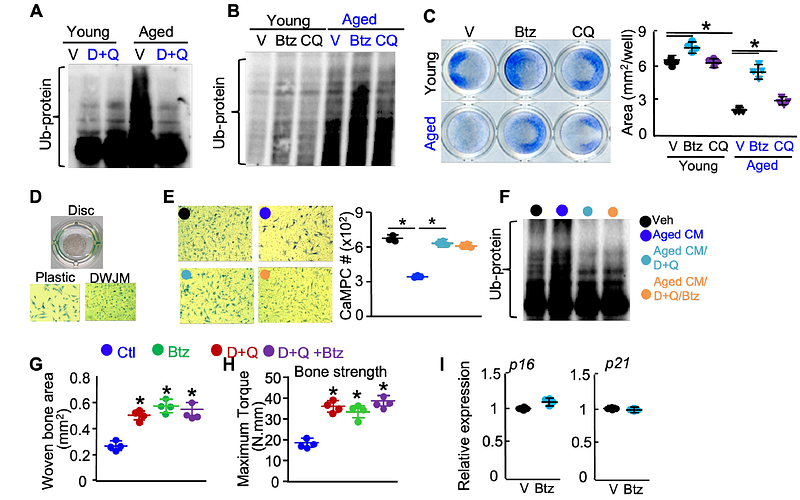Senescent cells impair fracture repair through elevating ubiquitin-proteasome system activity in aged mice.

Senescent cells impair fracture repair through elevating ubiquitin-proteasome system activity in aged mice.
Zhang, J.; Xu, J.; Liu, J.; Lipe, B.; Wu, T.; Boyce, B.; Shen, J.; Xing, L.; ZHANG, H.
AbstractSenescent cells accumulate in multiple tissues with aging. Depletion of senescent cells benefits the aging related disease, such as aging bone fracture. However, the molecular mechanisms by which senescent cells regulate their neighboring bone cells are still not well-known. We reported that proteasome inhibitor enhanced fracture repair in aged mice. Senescent cells are major source of chronic inflammatory cytokines, which in turn induce protein ubiquitination. We reported that PDGFRbeta was one of the highly ubiquitinated proteins in mesenchymal progenitors (MPCs) and TGFbeta was the most increased SASP. In the current study, we found TGFbeta induced PDGFRbeta ubiquitination and proteasomal degradation through its E3 ligases. TGFbeta neutralizing antibody blocked the inhibited callus derived MPC growth and increased Ub-PDGFRbeta by senescent cells, which could be further prevented PDGFRbeta inhibitor. These findings suggested senescent cells derived TGFbeta impaired fracture repair in aged mice through elevating ubiquitination of PDGFRbeta. The discovery of TGFbeta-PDGFRbeta pathway triggered by senescent cells opens avenues for optimizing treatment strategies for aging related disease by combination with the ligand of PDGFRbeta.